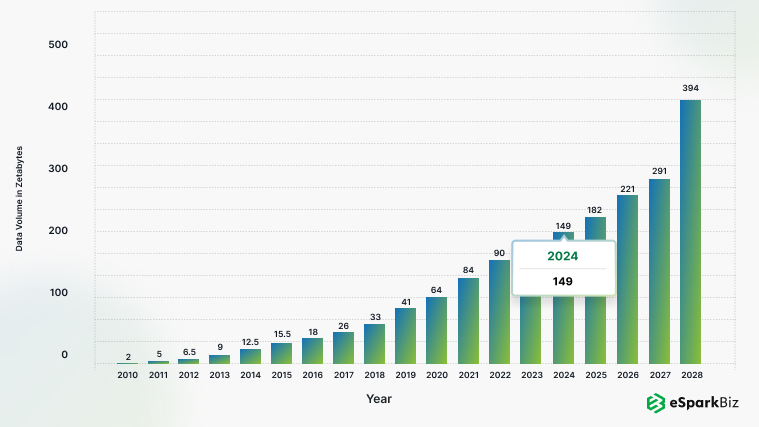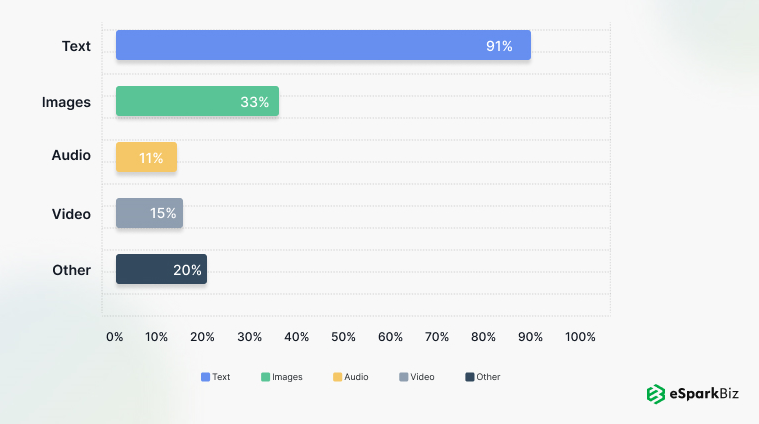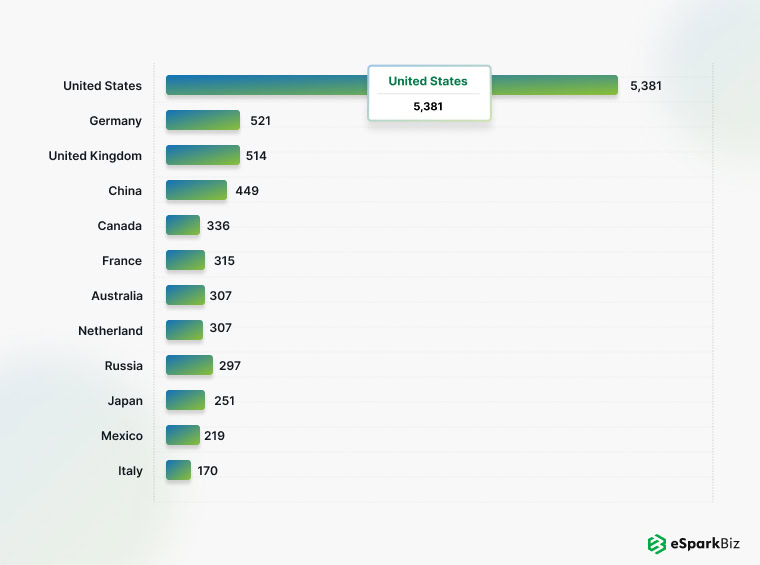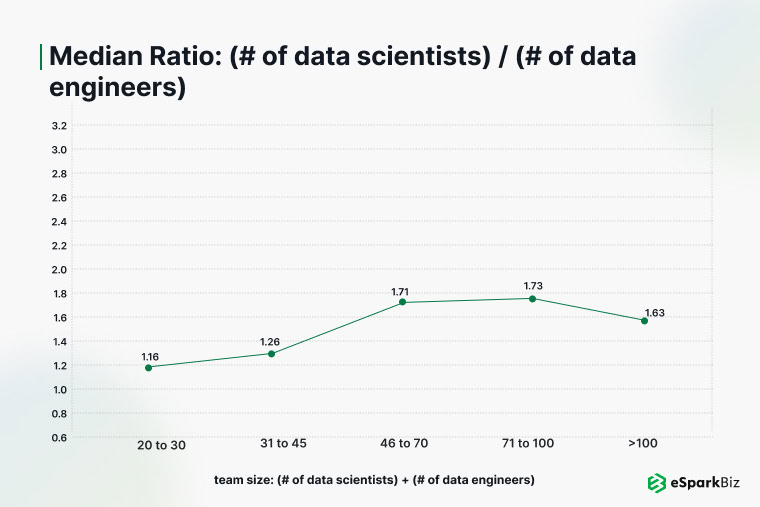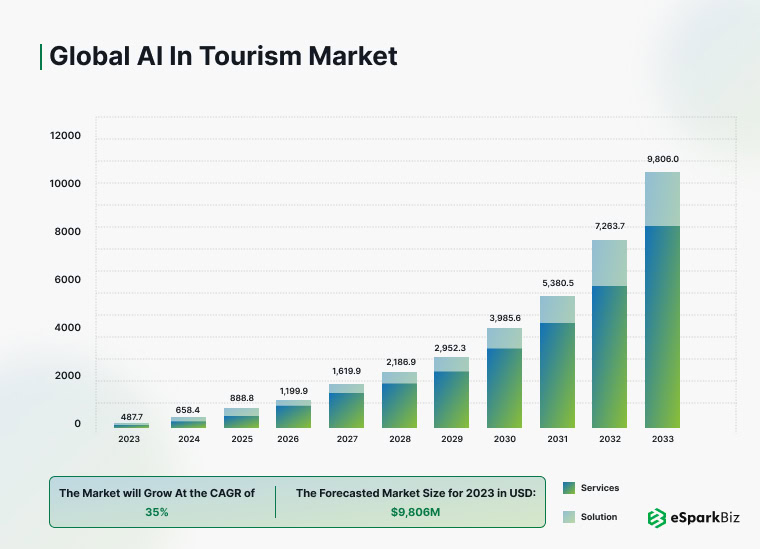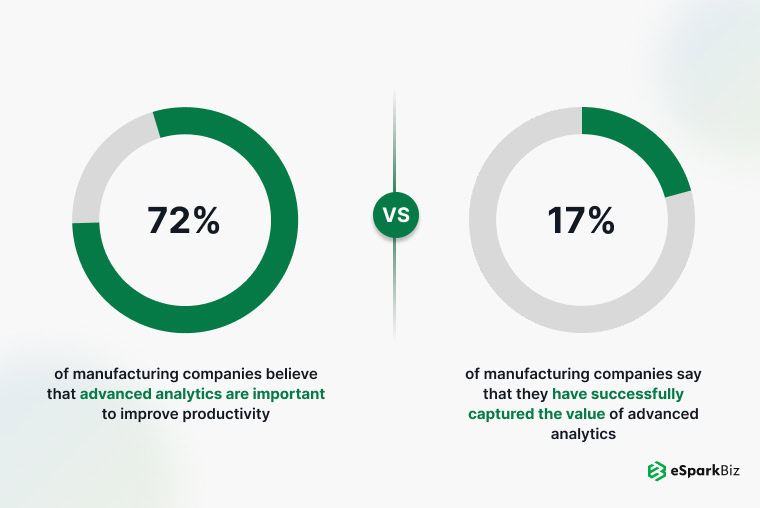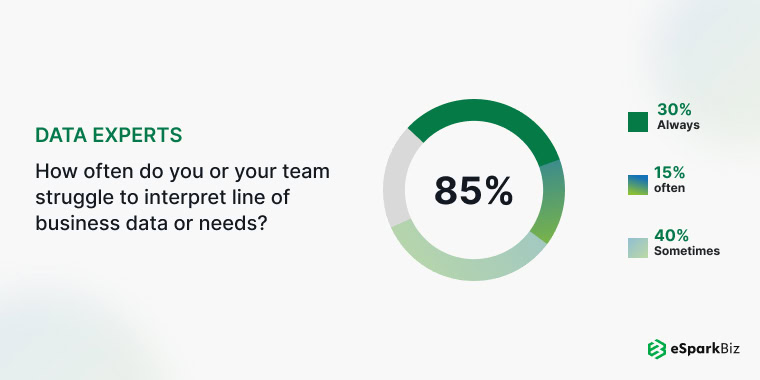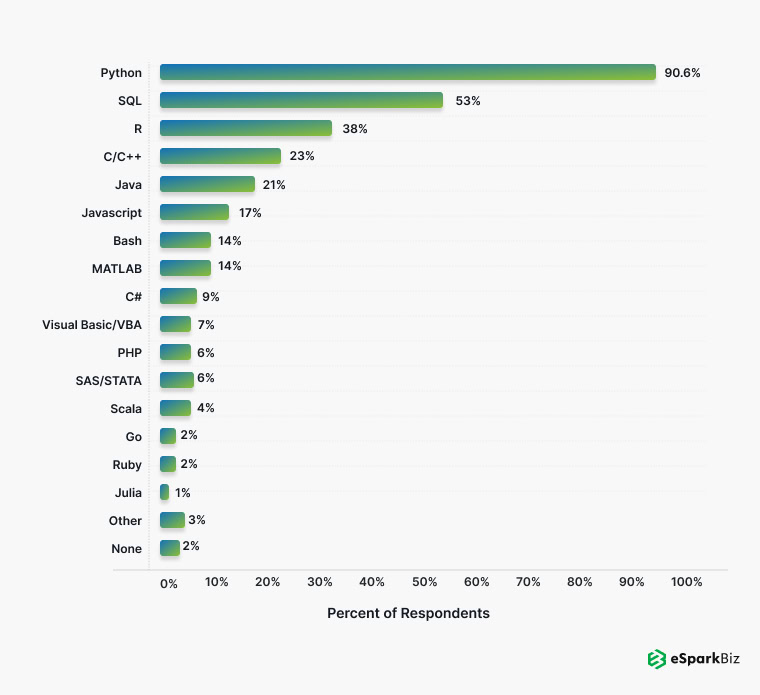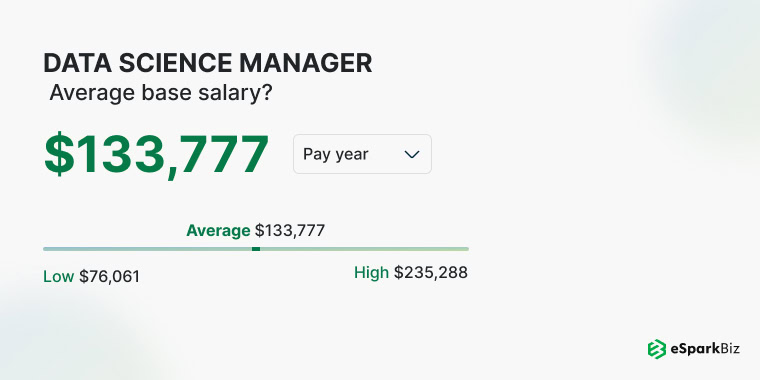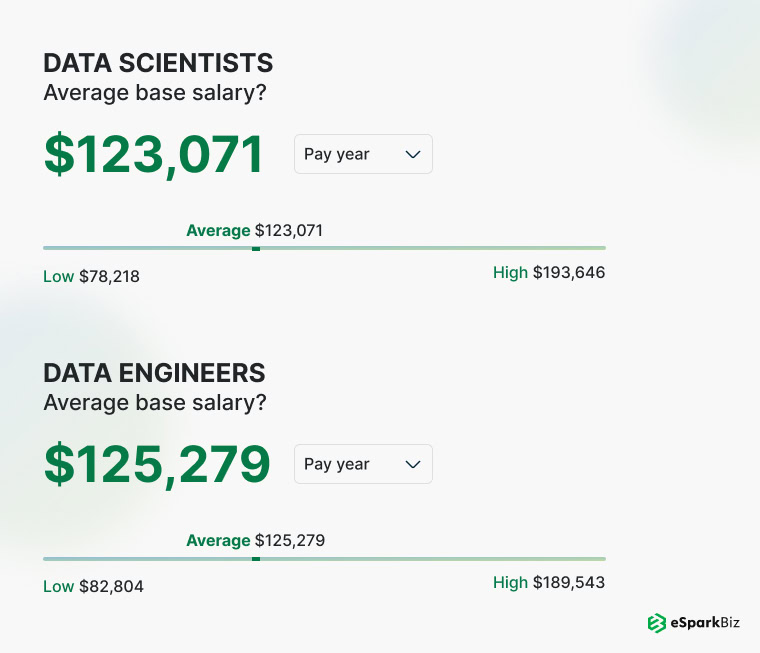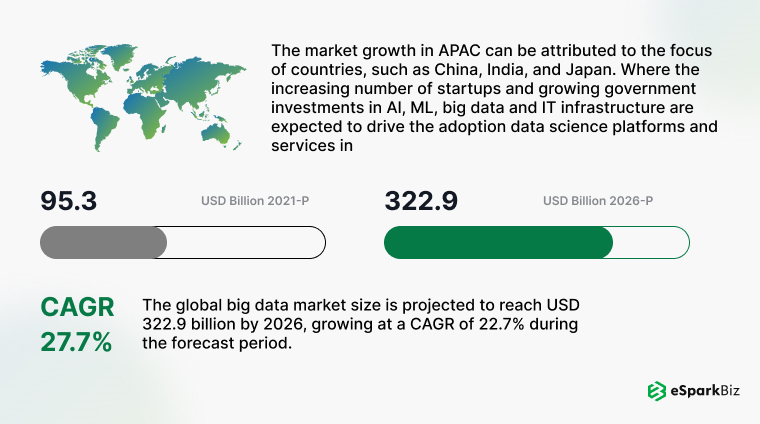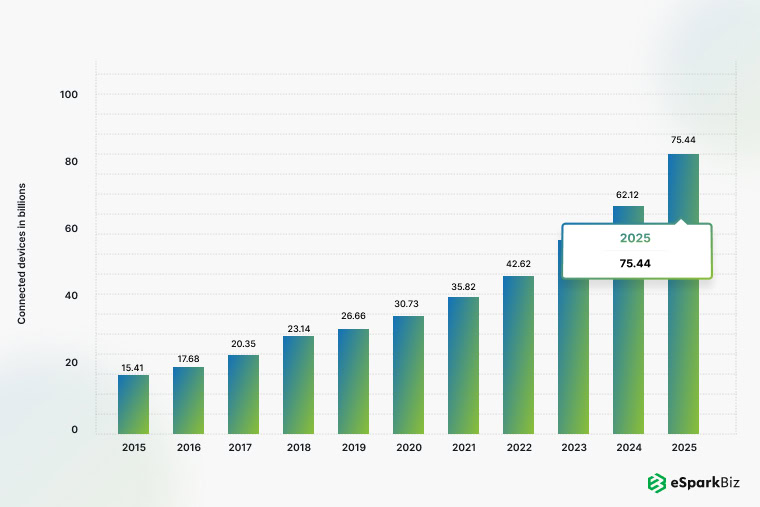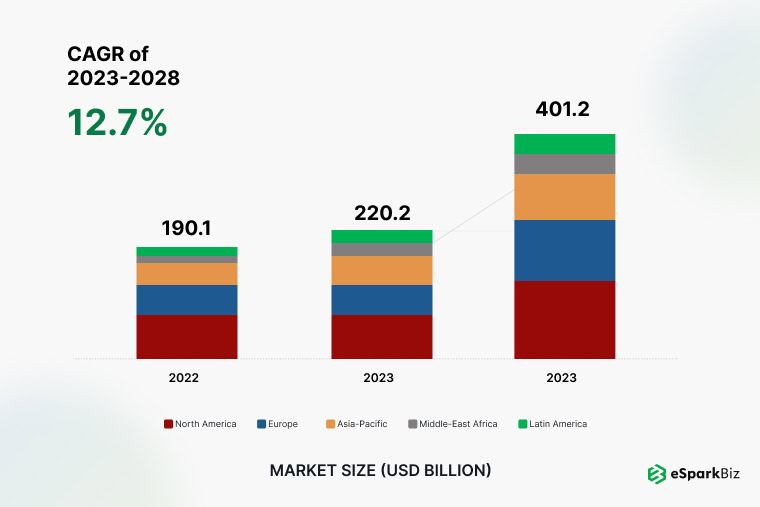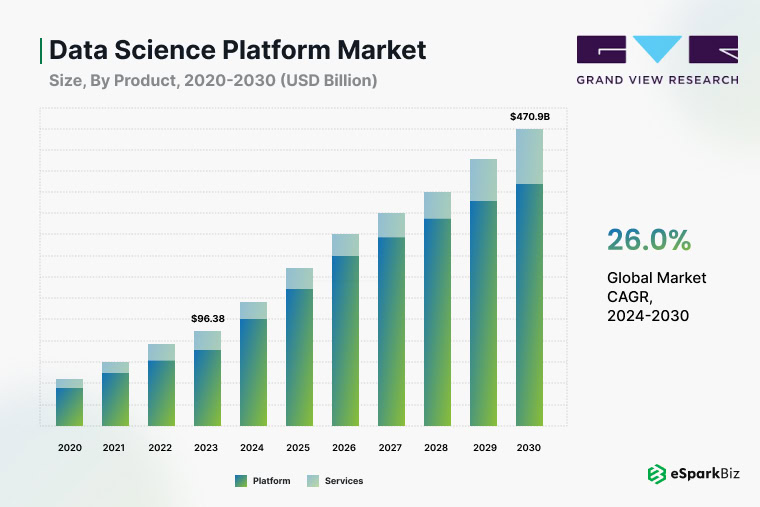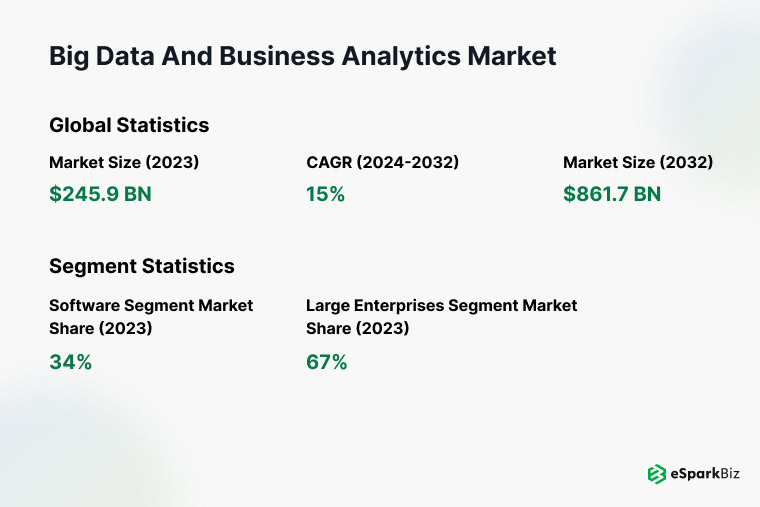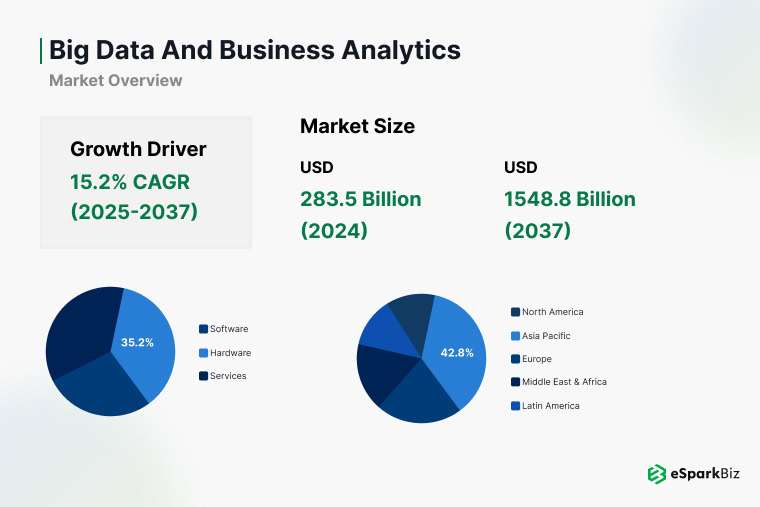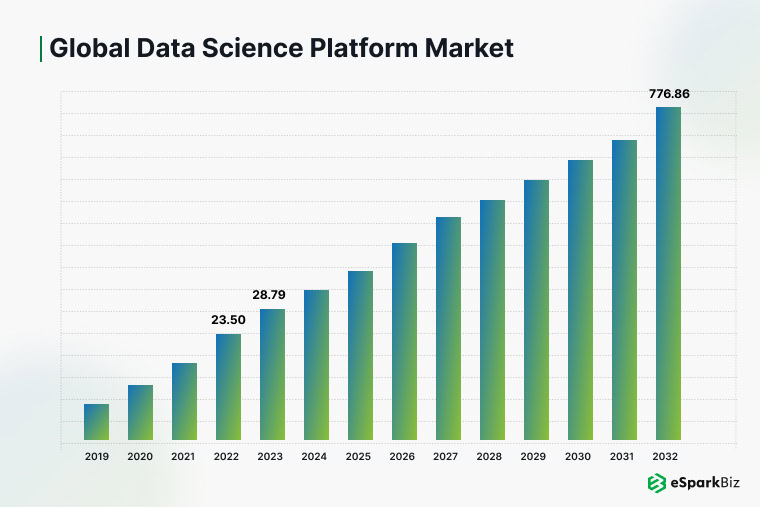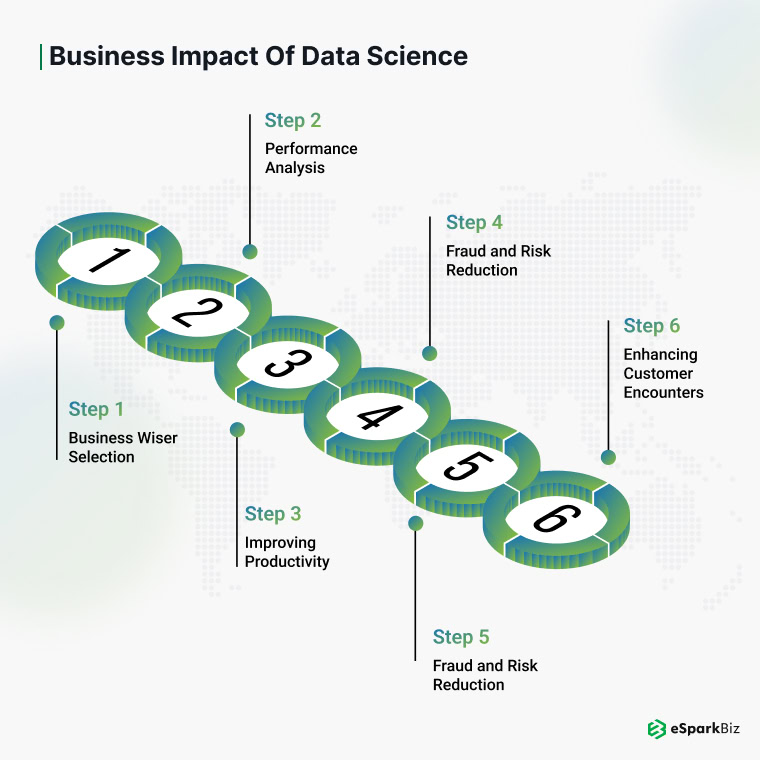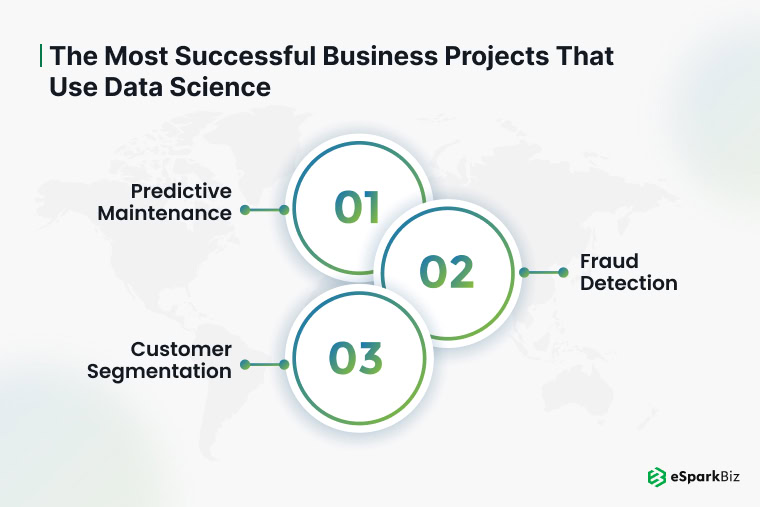Quick Summary :- In 2025, data science is still a force that is shaping data into actionable business insights. This blog goes through more than 50 key concepts in data science statistics that every data science enthusiast should know- from descriptive statistics to advanced statistical methods. These key data science stats are essential for effective data utilization and competitiveness in today's data-driven world.
With the increase in internet usage and technology, the volume of data in everyday life is increasing at a tremendous rate. Businesses are looking for new ways to transform this data into valuable business insights to make better decisions.
Today, eBay, Amazon, YouTube, and Netflix are known for improving customer experiences with personalized search history recommendations. Without data insights, this level of customization is unattainable. This is where data science matters.
Data science has gripped the I.T. world since 2008. Every type of business is increasingly employing data science today to discover data patterns, venture into new markets, reduce costs, enhance the efficiency of operations, and gain an edge in competition.
This blog covered all the must-know data science statistics that give you a quick insight into data science and its demand.
Top Data Science Statistics and Facts
Technological advancement, the availability of data, and the need for data-driven decision-making have caused rapid change in data science services. Most statistics and trends related to data science in 2024 indicate that data science has changed businesses.
These data science statistics indicate that data science is important, growing, and also has a good potential for organizations and professions. Data science statistics cover all sectors of data science from the fast-growing need for data science skills to big data technology.
1. Techjury states that daily $1.145 trillion megabytes of data are generated.
2. Statista shows that there were about 149 Zetabytes of data or information that were created, used, obtained, and copied globally in 2024, and projected to be 394 Zetabytes of data usage by the year 2028.
3. Text data is going to continue being the biggest used in data science with a 90% usage, according to the Data Scientist Report by CrowdFlower. Besides, the same survey indicates that the unstructured data is 33% image, 11% audio, 15% video, and 20% others, which are also text-based.
4. IDC thinks that the data sphere of the world would reach 175 Zeta bytes by 2025 and 90% of it could be duplicated.
5. According to a report in CIO magazine around 80-90% of content in the digital world of the globe are unstructured information.
6. It would take around 181 million years for an average internet user to download information from the internet world.
7. The United States has one of the largest data center markets and has more than 5381 data center sites around the world. Revenue from data centers reached $99.16 billion by the end of 2024.
8. In 2023, an average internet user generated about 1.7 MB of data per second, which is 146,880 MB daily.
9. Globally, women only constitute 15% of data science professionals.
10. This average ratio finds two data scientists for data engineers.
11. The probable market value that big data in healthcare analytics shall reach is calculated to be USD 134.9 billion between 2023 and 2032, that is, on a CAGR of 16.7 %.
12. Business Intelligence and Predictive Analytics, which falls under the broader category of Artificial Intelligence (AI), the global travel industry has invested about USD 487.7 million in 2023. This market is expected to grow very rapidly over the next few years with a compound annual growth rate (CAGR) of approximately 35% in the years 2024-2033 and will reach USD 9,806.0 Million By 2033.
13. The big data analytics market was around USD 348.21 billion in 2024 and is likely to reach around USD 924.39 billion by 2032.
14. For 95% of businesses, it is tough for their sector to manage unstructured data.
15. As many as nearly 47% of respondents said data analytics altered the competitive dynamics in their respective industries and had given organizations an edge.
16. The BCG-WEF project report says that 72% of manufacturing companies utilize advanced data analytics to increase productivity.
17. A recent study stated that 70% of marketers believe that their data is irrelevant for effective decision-making.
18. According to ZoomInfo, poor data quality is causing 15-25% losses in the operating revenue of multinational firms.
19. A study finds that bad data quality costs the US economy $3.1 trillion annually.
20. A Sigma survey shows that 85% of Data Experts find it difficult to interpret business data lines.
21. IT budget constraints are the biggest barrier for 50% of U.S. and 39% of European executives using the data science approach.
22. In a recent survey, 38% of data scientists preferred the R programming language for data science tasks.
23. 21 percent of data scientists rely on Java, 23% percent employ C/C++, 9 percent prefer C#, and 17 percent employ Javascript.
24. Python for Data Science activities is considered the most widely used programming language with a preference of 90.6% of Data scientists.
25. SQL is considered the next most preferred programming language after Python with a preference of 53%.
26. According to the U.S. Bureau of Labor Statistics, data scientist jobs are likely to grow by 36% from 2023 to 2033.
27. A data scientist spends 80 percent of their time organizing data.
28. A report states that only 22% of organizations can fully leverage their data to create actionable insights.
29. Moreover, 70% of organizations’ digital transformation initiatives fail to deliver on their promise.
30. As stated by the National Health Service in the United Kingdom, it needs 90% of its workforce to be data literate by 2040.
Data Science Facts : Data Science Job and Salary
Recently, data science has emerged as one of the most sought-after careers with competitive pay. To evaluate the current data science job and salary insights, let’s discuss the following facts:
1. As per Glassdoor, the average base salary for an experienced data scientist in the U.S. is $91T—$1L/yr.
2. The supply of data scientists is met with a good deal of pay as the average annual salary of data scientists stands at $108k.
3. The average yearly increase in salary for a Data Scientist amounts to about 2.25%.
4. The best-paid professionals are data science managers, who range from $76,061 to $235,288 per year.
5. Pay for Data scientists ranges between $78,218 and $193,646 per year, and for Data engineers, it is between $82,804 and $189,543 per year.
6. By 2026, there will be a job for a data scientist in 11.5 million positions.
Data Science Statistics For Future
A better insight into the future can be gained by looking at some of the most crucial data science statistics. Some amazing data science statistics for the future are discussed as follows:
1. According to the report published by Marketsandmarkets, the market size of the data Science sector is expected to reach USD 322.9 billion with a CAGR of 27.7% by 2026.
2. Data science statistics in Statista show that there will be more than 75 billion Internet of Things (IoT) connected devices by the end of 2025. There will be almost three times more IoT devices in 2020 than in 2019.
3. 93% of firms said they would spend extra money to enhance their area of data and analytics.
4. More investments are being seen in Big Data solutions, owing to which, the global big data market will be valued to be $401.2 billion in 2028.
5. According to various studies conducted worldwide, close to 56% of all healthcare organizations embrace predictive analysis use.
Other Interesting Data Science Statistics You Should Know
- Grand View Research reported the size of a worldwide data science platform market which will reach about USD 470.92 billion by 2030.
- According to a new statistical survey published by Grand View Research, Inc., the global big data industry is likely to reach a value of USD 862.31 billion by 2030.
- The newest Big Data and AI Executive survey shows that only 39.3% of firms currently treat data as an asset.
- Corporate analytics and big data revenue market have increased significantly. It is going to reach up to USD 861.7 Billion in the year 2032.
- The software segment is expected to hold about 35.2% of the big data and business analytics market share by 2037.
- A survey reported that 85% of business leaders said they used Generative AI for low-value tasks.
- Global revenues for business analytics and big data solutions will experience a CAGR of 15.2% between 2025 and 2037.
- More than 15 million people use the data science community “Kaggle” in 194 different countries.
- A person uses many devices and (social) applications to produce and consume data for five to six hours daily. Every swipe, click, and conversation generates data stored in a database.
- In the month of May 2020, an India-based data analytics startup Synaptic secured USD 20 million in series B funding. Therefore, data science and analytics businesses in this area are growing in count.
- According to Fortune Business Insights, the market will have reached USD 776.86 billion by 2032.
Business Impact Of Data Science
The above data science statistics reflect that the future of data scientists is bright, and thus, businesses are impacted hugely in a favorable manner.
Software product development, decision-making, & productivity can all be improved by a considerable percentage by incorporating data science within your business’s operations. It can raise your productivity, refine the quality of customer service, and significantly reduce or remove fraud and error risks.
Furthermore, data scientists can help your business automate tedious jobs so that human hands and minds can concentrate on more vital work.
Here are some advantages of data science for businesses:
Business Wiser Selection
Gathering and using techniques of risk and data analysis for making intelligent choices. For a company’s senior management, the gathering and processing of the company’s statistical data is an unbiased support mechanism during difficult times while making critical decisions.
Performance Analysis
Data science allows businesses to track performance through data collection and offer solutions through the use of software development trends and empirical evidence in making decisions throughout the organization. Providing internal financial information
Your business can also use data science to build financial reports, project forecasts, and study economic trends that will guide you in making well-informed decisions regarding your budget, money, and spending. This would allow for fully optimized income generation and a clear understanding of internal financial conditions.
A business can contact its target audiences, discover what they appreciate, and then customize its products to that audience using exploratory data analysis and a data-driven approach to deliver verifiable and evidence-based numbers.
Improving Productivity
It tests and measures a number of approaches through data collection at the workplace while also obtaining inputs from the everyday operations of a company. The business expands and can manage increased work volume due to improvements in efficiency on daily operations and jobs.
Industrial data enables businesses to remove inefficiencies and maximize output. A huge volume of collected industrial data can provide crucial information for productivity and production efficiency improvements.
Fraud and Risk Reduction
Data science can help your company strengthen security and safeguard potentially sensitive data. Machine learning algorithms can identify fraudulent activity by analyzing data related to a user’s regular behavior. These events can provide sizable data clusters that machine learning development can use to identify these occurrences accurately.
Monitoring workplace operations and keeping a record of workplace activities can help the business identify policy violations by employees or fraudulent activity.
Forecasting Results and Patterns
With the help of data science stats, data scientists and statisticians can provide projections and predictions using statistics and big data collected within the organization, enabling leaders to modify operations depending on these predictions.
In addition to providing your business with predictions about consumer feedback, market trends, and general public trends, data collection, and analytics can also help you target specific audiences with your activities like marketing, or make adjustments depending on the actions of your competitors.
Enhancing customer encounters
Customer information gathering enables the attraction of a target market and personalization of the needs and experiences of customers based on the collected information. Outcomes can enhance sales & enable businesses to build a brand that customers trust by giving them an idea about their preferences.
Among other helpful information, customer data can display their likes, dislikes, interests, habits, and other traits. There are several methods available to a business for obtaining customer data.
Nevertheless, data science statistics experts and analysts must process and deliver it to benefit the company. Building a brand & getting your business offerings in front of the appropriate people requires knowing who your customers are.
The Most Successful Business Projects That Use Data Science
Several business enterprises have successfully included data science. Listed below are a few examples.
Predictive Maintenance
In this application, data science predicts when a machine will probably break down. By using data science statistics, maintenance may be planned ahead of time to prevent equipment breakdowns and save the business money and downtime.
Fraud Detection
By designing models that detect fraudulent behavior, data science metrics can prevent fraud from taking place or unravel fraud that has already occurred.
Customer Segmentation
Consumer segmentation leverages data to isolate homogeneous categories of customers. Using this information helps tailor marketing efforts and personalize digital product development approach and services to specific requirements of different consumer segments.
Many successful commercial initiatives involve data science. One internet retailer that comes to mind is Amazon. Amazon expanded its customer base and sales based on data science, making recommendations to customers according to their history of searches and purchases.
Tinder is one of the examples of dating apps. This is one of the most widely used dating apps across the globe, which matches users with possible matches based on their location and interests through data science. R certification in machine learning can enhance your knowledge of data science and the ability to work with, analyze, and visualize data.
Conclusion
More critically today, the year 2024 sees the application of data science to enable companies to add and unlock valuable insight from oceans of data. With these statistics mentioned above about data science, all data science fanatics should polish up their analytical acumen to ensure innovation in these areas to impact decision-making effectively within organizations.
As for data science stats, understanding the above-listed data indicates that with the continuous shaping of the future by data, the demand for skilled data scientists will increase.
If you’re looking to harness the power of data to gain a competitive edge, manage costs, and explore new markets, our company can help. We specialize in providing top-tier data science professionals with the knowledge and expertise to transform your data into actionable business insights. Hire data scientists with us and take your business to new heights.
Contact us today to learn more about how we can support your data science needs!
-
Is the future of data science bright?
Data science will have a brighter and longer-lasting future because of several factors that include the business's incapacity to handle huge volumes of data, changes to data governance laws, and the astonishing rise in the creation and handling of data.
-
Which trends will rule data science in the future?
Data-as-a-service, offering augmented analytics and edge intelligence will be some of the Data Science Trends that should shift the game. Other trendy Data Science directions include hyper-automation, the Internet of Things, Automated data cleaning and dominance of NLP, the use of Quantum computing for better analytics, Automated Machine Learning AutoML, as well as the democratization of AI.
-
Which methods of statistics are most commonly utilized in data science?
Some of the techniques commonly used in this domain are regression analysis, hypothesis testing, Bayesian inference, clustering, and time series analysis. All these are fundamental in explaining the relationship, trends, and variability of data.
-
What is the difference between statistical analysis and machine learning in data science?
In essence, statistical analysis is hypothesis testing and understanding the relationship between data, whereas machine learning focuses on building predictive models and automating data-driven tasks. Both form an important part of data science.
-
What should a future data scientist be trained in?
Other than data analysis, programming, and machine learning, a future data scientist must be aware of cloud computing, deep learning, and domain-specific knowledge to compete.
-
What are the options for career development for data scientists?
Data Scientists can eventually lead to Senior Data Scientists, Machine Learning Engineers, Data Science Managers, or even Chief Data Officers. In these roles, there is a probability of leading the team and implementing a data-driven strategy.

